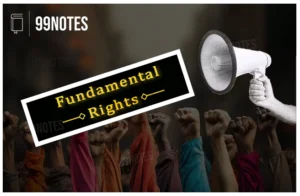11 Oct 2023 : Indian Express
Indian Express
11-October-2023
1) MANIPUR CONFLICT: FREE MOVEMENT REGIME
Context:
- The Chief Minister of Manipur has requested the Union Home Ministry to revoke the free movement policy along the India-Myanmar border.
- Currently, this system permits residents of the border regions of India and Myanmar to cross into the other country’s territory without a passport for up to 16 kilometers.
Key Points of the Concern Voiced by Manipur’s CM
The Manipur government has asked the Union Home Ministry to revoke the free-flowing policy along the border between India and Myanmar. This implies that there are worries about the arrangement’s potential for abuse and its security.
- Border fencing: The requirement to finish the fencing along the India-Myanmar border is stressed repeatedly. The 60 kilometers of this international border in Manipur are purportedly being fenced off by the Union Home Ministry.
- Influx of undocumented immigrants: The Chief Minister has voiced worry over how to handle the inflow of unauthorized immigrants. This implies that there might be problems with illegal immigration from Myanmar into Manipur.
- Security Personnel Deployment: According to the Chief Minister, security personnel have been stationed within Indian territory rather than at the border’s zero point, where they should be.
- Ethnic conflict: On May 3, ethnic conflict which allegedly implicated illegal immigrants from Myanmar erupted in Manipur. Demands for Scheduled Tribe status and conflicts within various tribes inside the state appear to be factors in the violence.
- Concerns about Poppy Cultivation and Deforestation: The statement also makes reference to worries about illegal immigration from Myanmar, which is significantly responsible for changes in some regions’ demographics as well as illegal opium poppy cultivation and deforestation.
- Allegations of Arms Supply: Concerns over security and insurgency-related issues have been raised by claims that terrorists in Manipur have obtained weapons from Myanmar.
What is the Indo-Myanmar Border’s Free Movement Regime?
- Mizoram, Manipur, Nagaland, and Arunachal Pradesh make up the four states that make up the 1,643 km long border between India and Myanmar.
- The FMR is a mutually agreed-upon agreement between the two nations that enables tribes residing on either side of the border to cross into the other country for up to 16 kilometers without a visa.
- In 2018, as part of India’s Act East policy, and as diplomatic ties between India and Myanmar were improving, the FMR was put into effect.
- In fact, the FMR was supposed to be implemented in 2017 but was postponed because of the Rohingya refugee crisis that broke out in that August.
Why did the Free Movement Regime idea come about?
- India shares complicated borders with both Bangladesh and Myanmar.
- In 1826, the British decided to draw the border between India and Myanmar without consulting the local populace.
- People of the same race and culture are divided into two nations by the boundary. Even today’s IMB reflects the boundary established by the British.
- Strong links between ethnic groups and families exist in the area. There are settlements in Manipur’s Moreh area where some dwellings are in Myanmar. The border cuts across the Longwa village chief’s home in Nagaland’s Mon district, dividing it in half.
- The FMR was intended to encourage local trade and business in addition to encouraging human contact.
- Through customs and border haats, the region has a long history of trans-border trade.
- Such exchanges are essential for the maintenance of local livelihoods given the low-income economy of the area. The towns in India are more conveniently located for commerce, education, and healthcare for the border residents of Myanmar than are those in their own nation.
Should the FMR be removed?
- The regime has occasionally been reviewed, and most experts concur that the FMR needs stronger control.
- India halted the FMR in September 2022 as the refugee crisis in Myanmar worsened and the number of people fleeing their country rose.
- The total elimination of the FMR, though, would not be a bad thing.
- The challenges the local populace would encounter in that scenario have been highlighted by experts.
- Before the Covid-19 epidemic, villagers appeared to be benefiting from dual citizenship and had the freedom to go across the border thanks to the FMR.
- Locals in the Phek area of Nagaland also claimed that the Myanmarese peasants preferred to travel to the Indian side for trade, healthcare, and education. The closest town in Myanmar is far distant for them.
- Therefore, the locals might not be in favor of completely repealing FMR.
- The residents of Moreh argued against “complete fencing” because portions of their ancestral lands were on the Myanmar side, despite the Meiteis of Manipur’s desire for the border to be sealed.
Way Forward:
- It is essential for India to approach the problem by following a “killing the snake without breaking the stick” strategy because of the shifting socio-politico economic conditions in Myanmar, the dynamic demographic profile, illicit activities, and border crimes along the IMB.
- By concentrating on infrastructural development and regulatory systems, the focus should be on updating FMR and converting informal to formal trade.
- The best way to handle international boundaries is for neighbors to work together to protect their shared borders. Political and diplomatic measures need to be properly developed for this cooperation to materialize.
2) The Changes in India’s Middle East Policy
Context:
- The recent Hamas attack on Israel over the weekend quickly acquired a domestic political dimension in India.
- This article will discuss the broad changes that have taken place in India’s Middle East Policy.
Five Broad Changes that stand out:
The first was the prime minister’s choice to make India’s connection with Israel public and to signal complete political ownership.
- Rajiv Gandhi, is undoubtedly the person who put an end to the boycott of Israel.
- Following through, PV Narasimha Rao established full diplomatic ties with Israel.
- Building on this foundation, Atal Bihari Vajpayee put an end to Delhi’s reluctance to host the Israeli Prime Minister.
- In order to acknowledge the growing convergence of interests between India and Israel, PM Modi overcame Delhi’s customary reluctance.
- He also visited Israel for the first time as Prime Minister of India.
Second, the government has worked to make India’s posture more in line with actual circumstances.
- The present government has accepted the fact that a number of Arab nations have started to make their peace with Israel without conditions, despite the opposition party’s continued belief that Delhi must wear (or pretend to bear) the cross of the “Palestinian cause.”
- In addition to Israel, moderate Arab states are also in danger from the violent religious radicalism of Hamas and other groups.
- Due to these shared issues, Israel and other Arab countries can now work together.
- Contrary to popular belief, Palestine is not being abandoned by the present government. It is keeping close connections with the Palestinian Authority.
- PM Modi had visited Ramallah in 2018 and India continues to support a two-state solution to the Israeli-Palestinian conflict.
Third, the political emphasis on India’s current support for Israel obscures the evolution of Delhi’s relations with the Arab world during the previous ten years.
- Despite its rhetoric, the previous government found it difficult to modernize its relations with Arab nations.
- The UAE, Saudi Arabia, and Egypt have become strategic partners under the the present government.
- The oil rich gulf today promises to support economic growth, in contrast to India’s traditional mercantilist stance in the past.
Fourth, the present government reversed India’s longstanding anti-Western policy in the area.
- One of India’s primary diplomatic goals during the Nehru years was to reduce American and British influence in the Middle East.
- As Indian foreign policy became increasingly radical in the 1970s, criticizing the West ceased to be a policy.
- Today, India is a member of the I2U2 group together with the US, Israel, and the UAE.
- In order to create a route between the Indian subcontinent and Europe across the Arabian Peninsula, Delhi has partnered with the US, Europe, Saudi Arabia, and the UAE.
- Even while Russia, China, and a large portion of the Global South offer a wishy-washy “two-handed” response to the terror attack, India’s criticism of Hamas terror places it on the same side as the West.
- India’s response is clear, underscoring its interest-driven foreign policy.
- If the failure to denounce Russia’s invasion of Ukraine was motivated by the desire to safeguard Delhi’s long-standing relationships with Moscow, steadfast backing for Tel Aviv stems from the importance of the terror issue to India’s security strategy.
For Enquiry

11 Oct 2023 : Indian Express

11 Oct 2023 : PIB

11 October 2023 : Daily Current Affair

11 October 2023 : The Hindu Editorial Notes PDF

YOJANA SUMMARY (JUNE 2023)

June Kurukshetra – Water Conservation

Yojana Magazine: July 2023

Kurukshetra July 2023: Summary

The Doctrine of Basic Structure

Fundamental Rights
Indian Express 11 Oct 2023 : Indian Express Indian Express
11-October-2023
1) MANIPUR CONFLICT: FREE MOVEMENT REGIME
Context:
The Chief Minister…
October 2023 PIB 11 Oct 2023 : PIB PRESS INFORMATION BUREAU
11-Oct -2023
1. India-Tanzania to work for the collective good of Africa and…
Daily Current Affairs 11 October 2023 : Daily Current Affair Daily Current Affairs
11-October-2023
1. SC sets Oct. 31 for hearing electoral bonds case.
Topic: GS2…
October 2023 The Hindu 11 October 2023 : The Hindu Editorial Notes PDF The Hindu Editorial
11-October-2023
1. Women want change, society needs change
Topic: GS1, GS3 –…
Yojana Summary YOJANA SUMMARY (JUNE 2023) INDIA-Gifting Holistic Well-Being to The World
DO YOU KNOW?
“This word is LiFE, which means ‘Lifestyle…
kurukshetra summary June Kurukshetra – Water Conservation During the Amrit Kaal, India is looking towards water as the future. June Kurukshetra addresses the issue…
Yojana Summary Yojana Magazine: July 2023 Chapter 1: Sahakar Se Samruddhi.
Ministry of Cooperation (MoC) for Prosperity and Progress:
Establishment…
kurukshetra summary Kurukshetra July 2023: Summary Chapter 1: Technologies for Sustainable Agriculture Development.
Introduction:
Conventional Indian agricultural…
Polity The Doctrine of Basic Structure How comprehensively can Parliament amend the Constitution? Can it change the very nature of the Constitution?…
Polity Fundamental Rights “Rights are claims of an individual necessary to ensure one’s happiness, without compromising the happiness…


